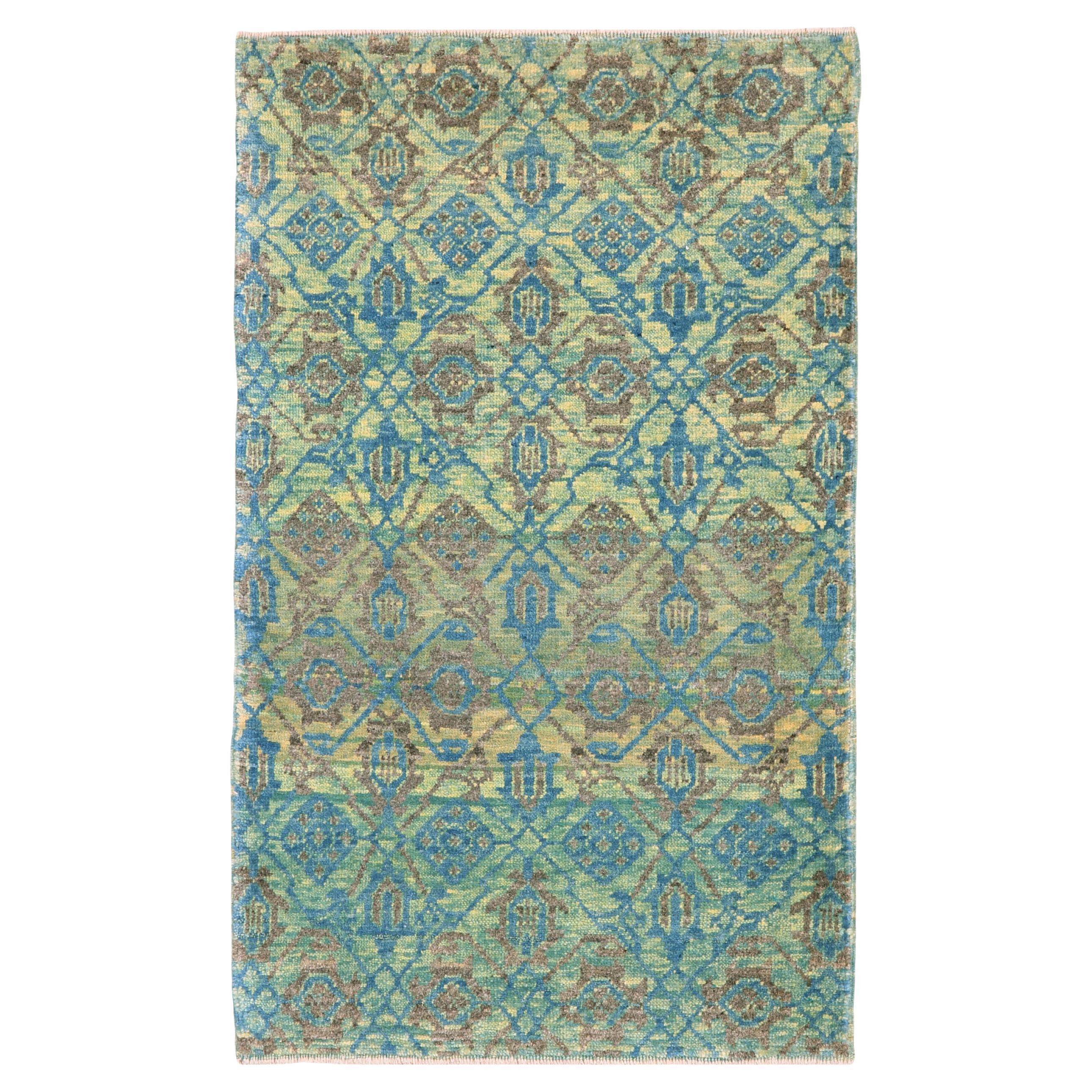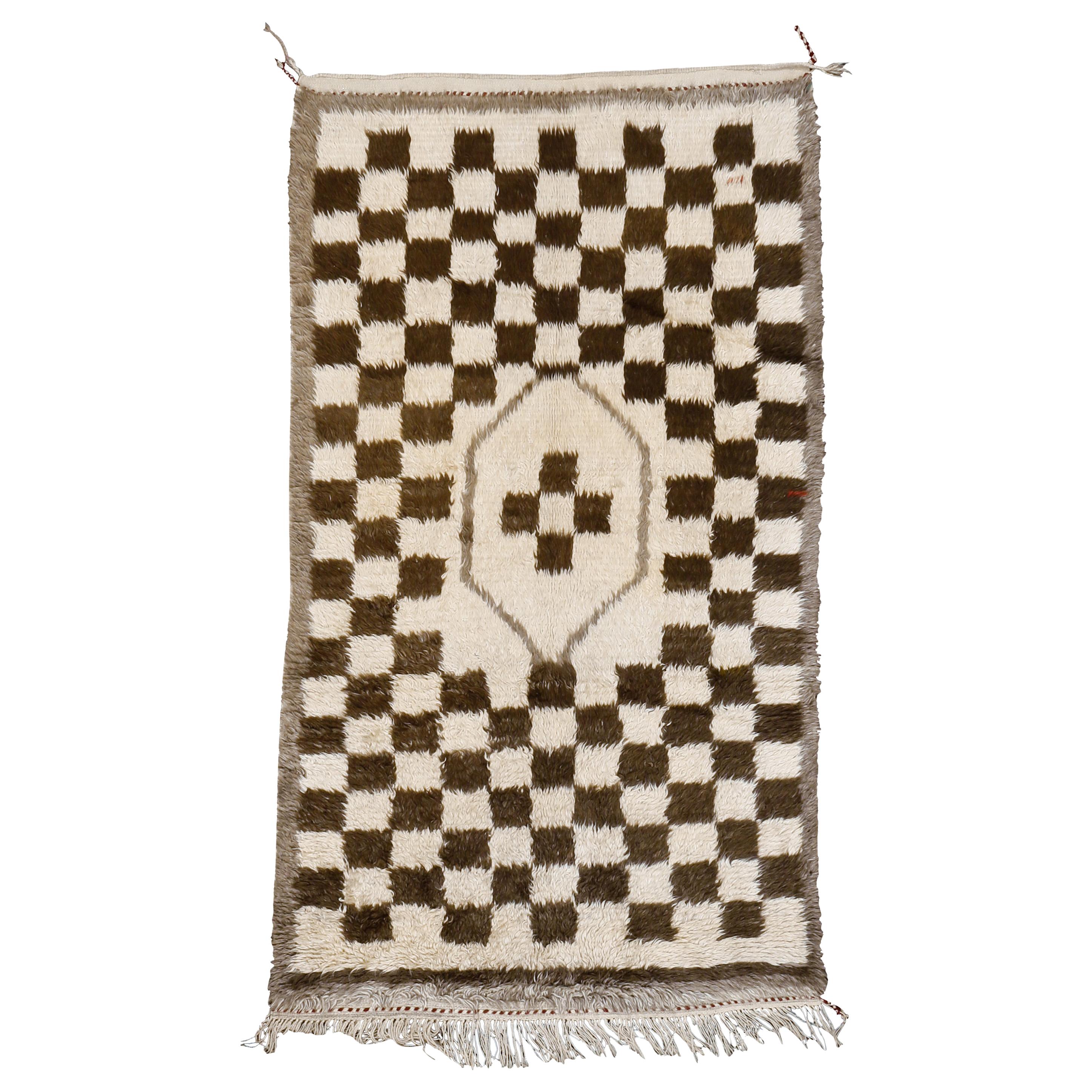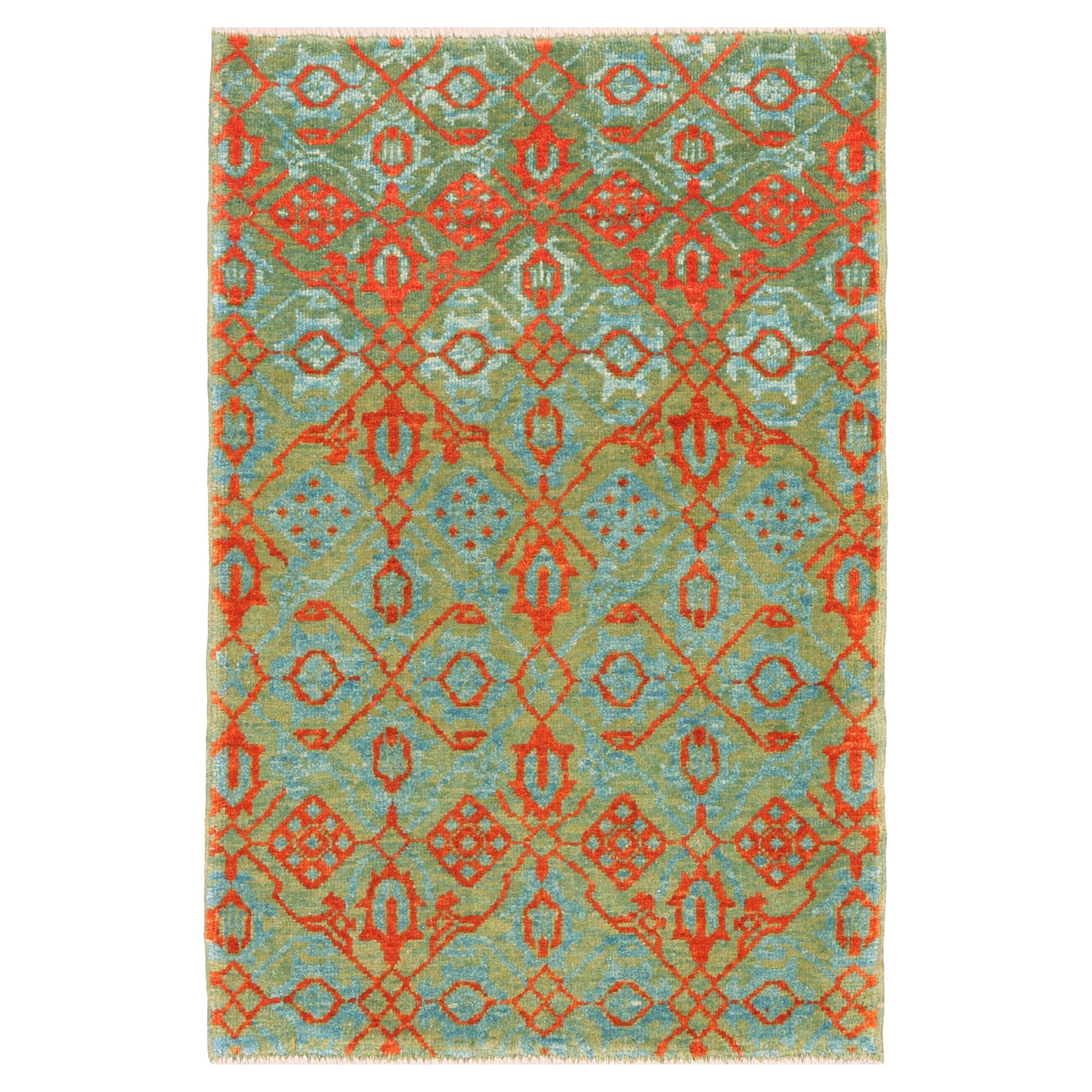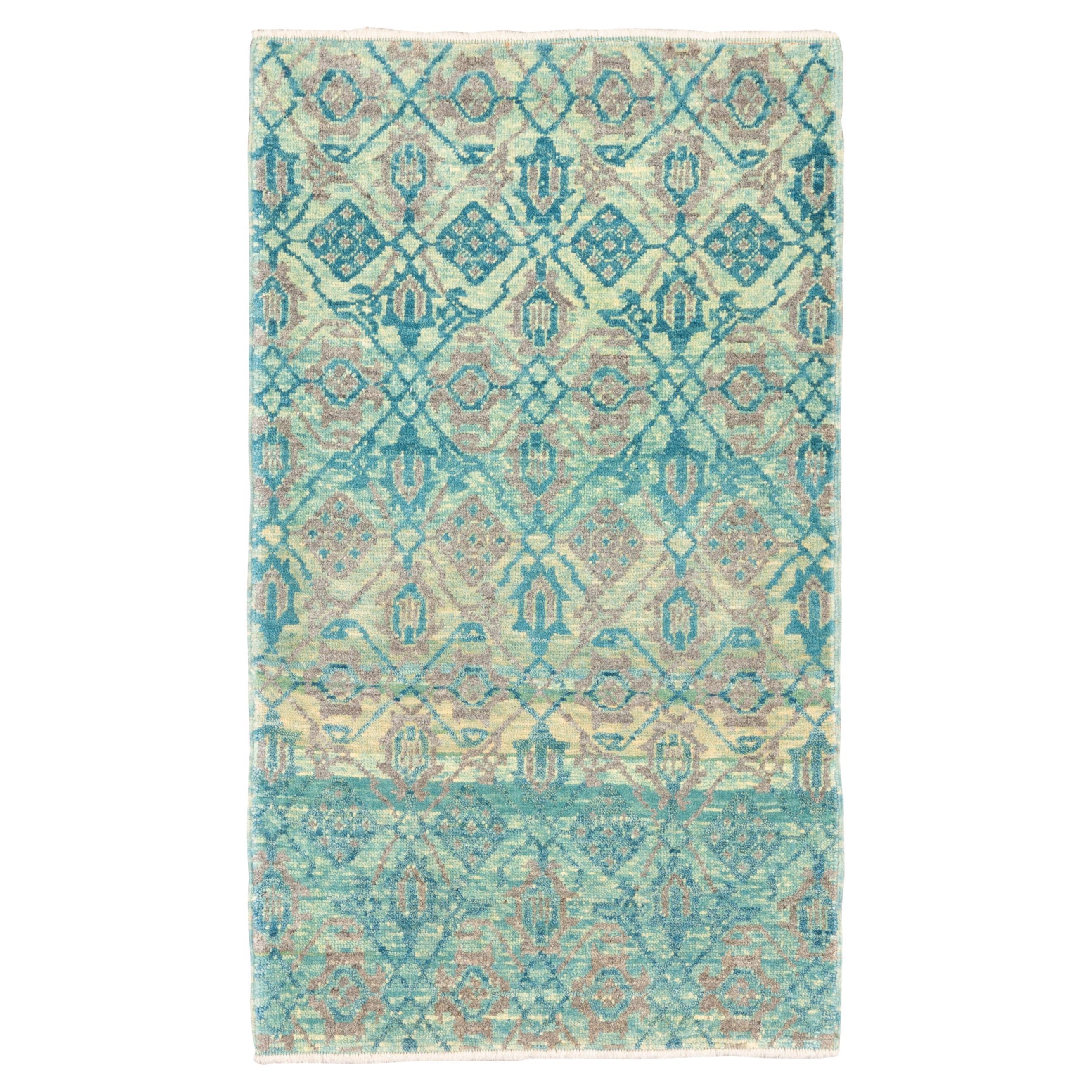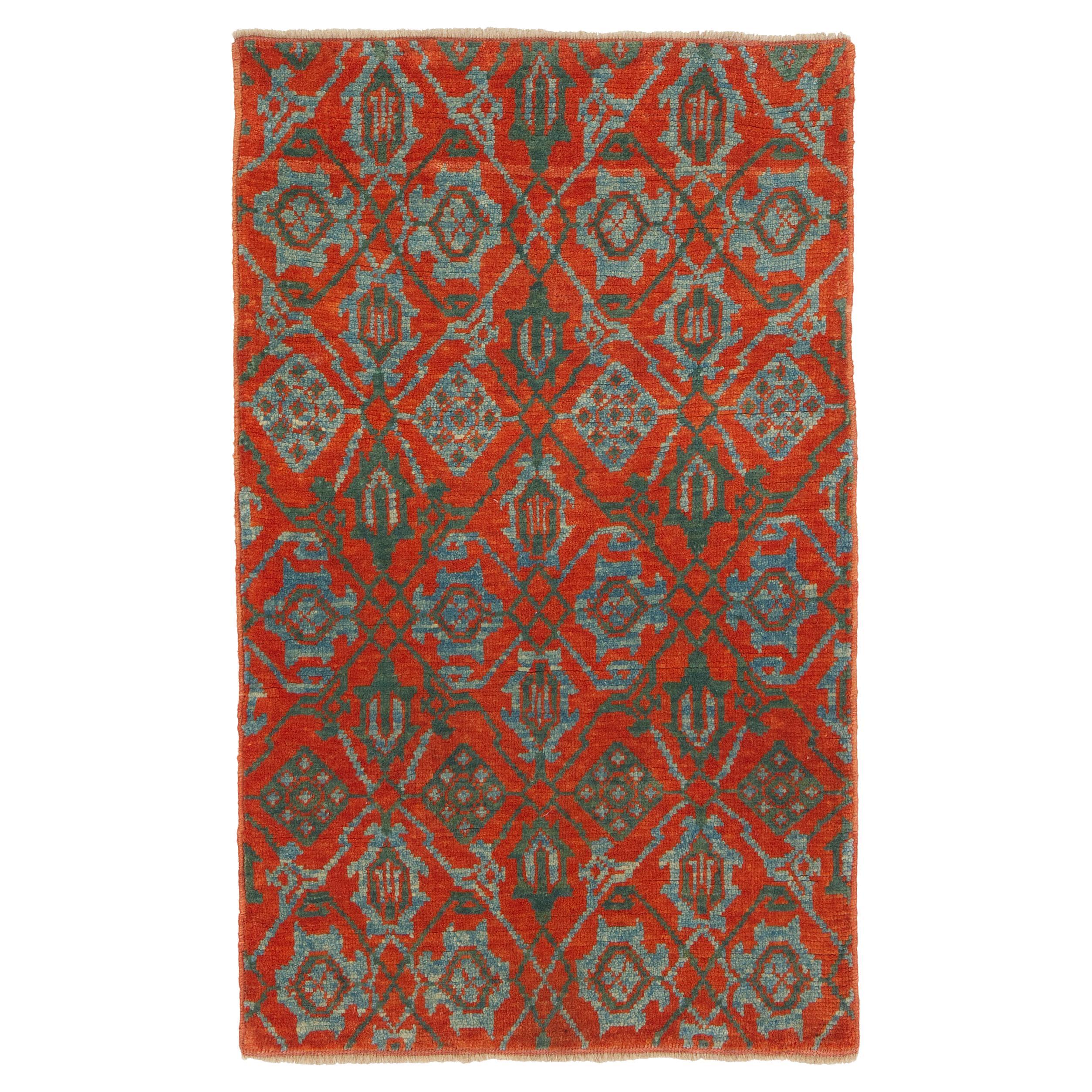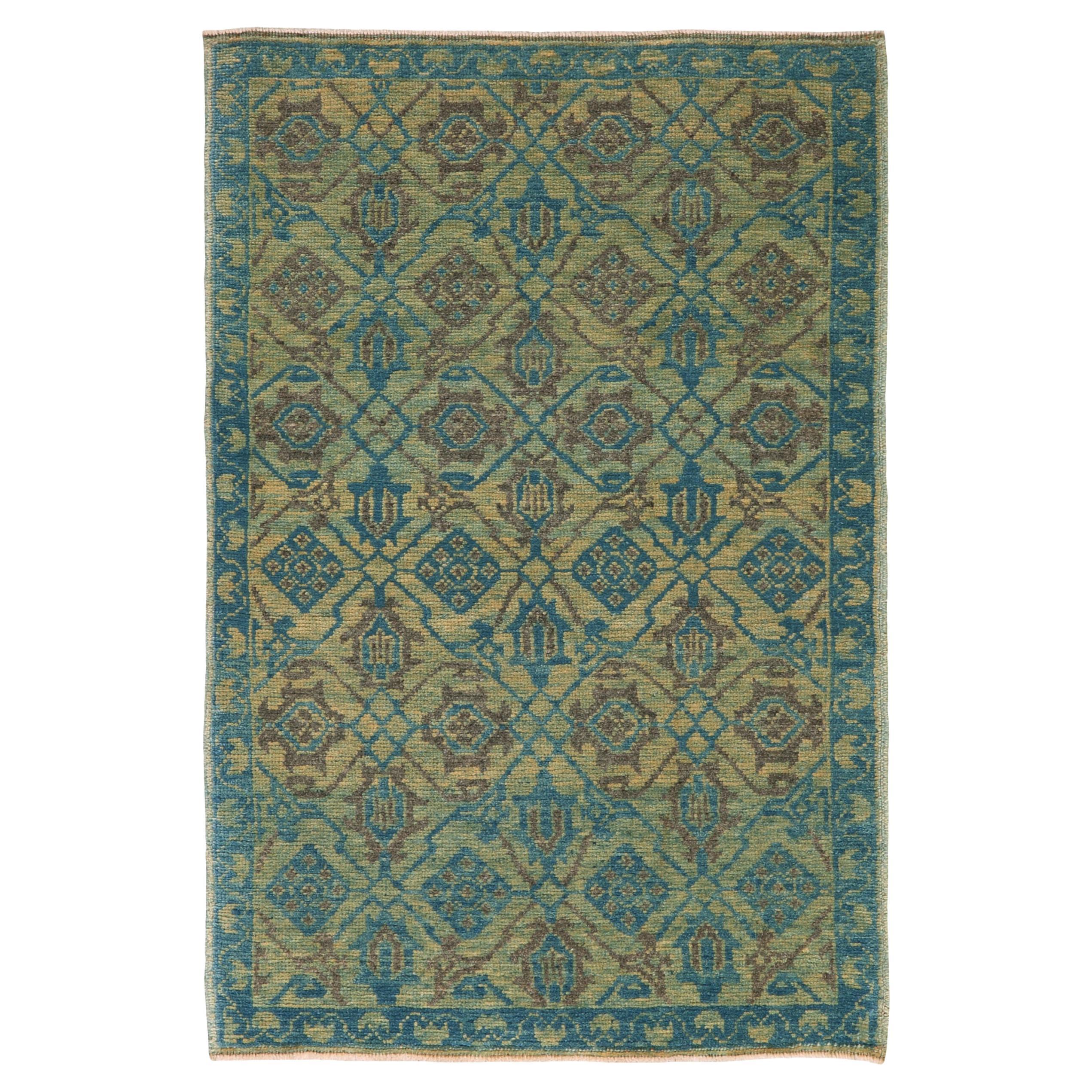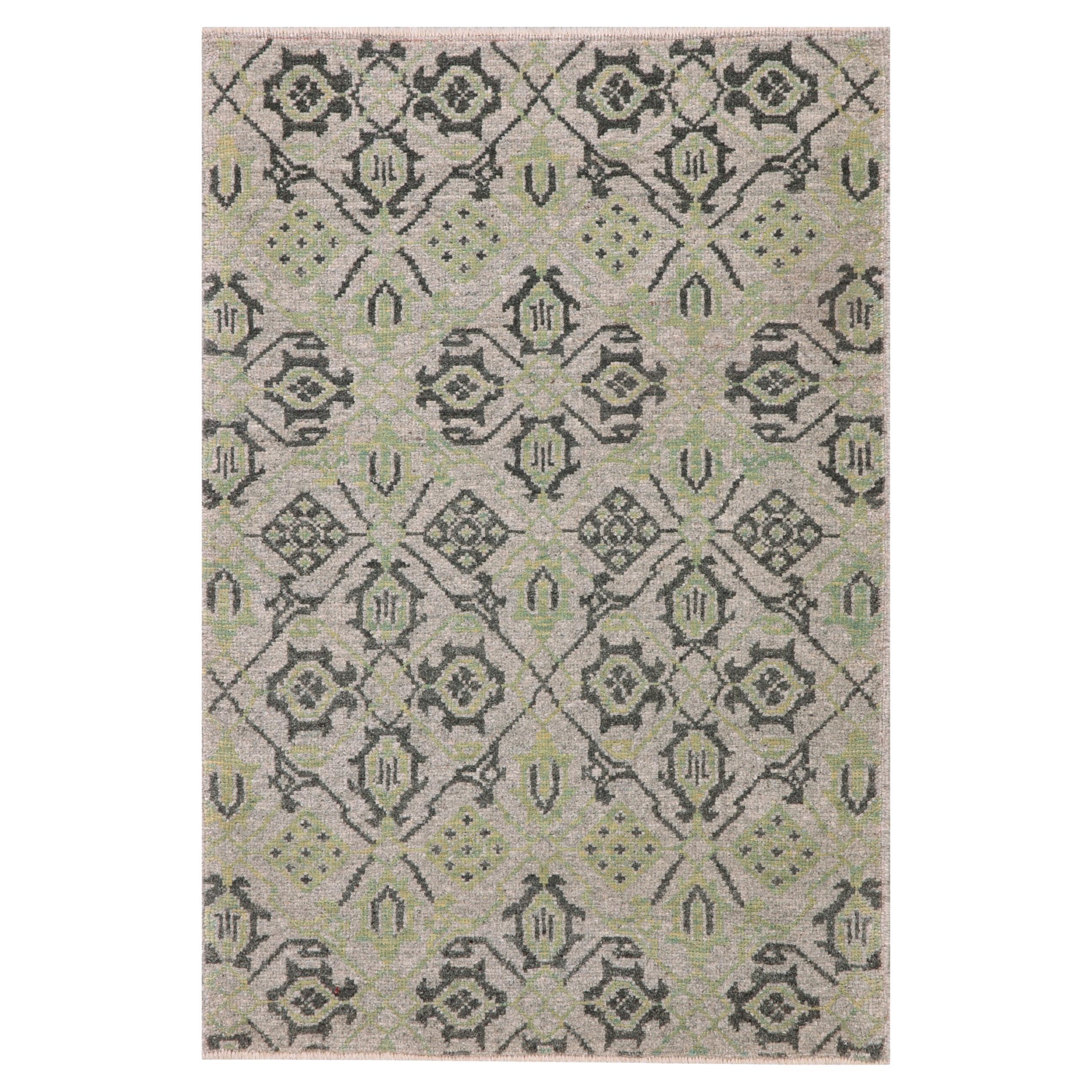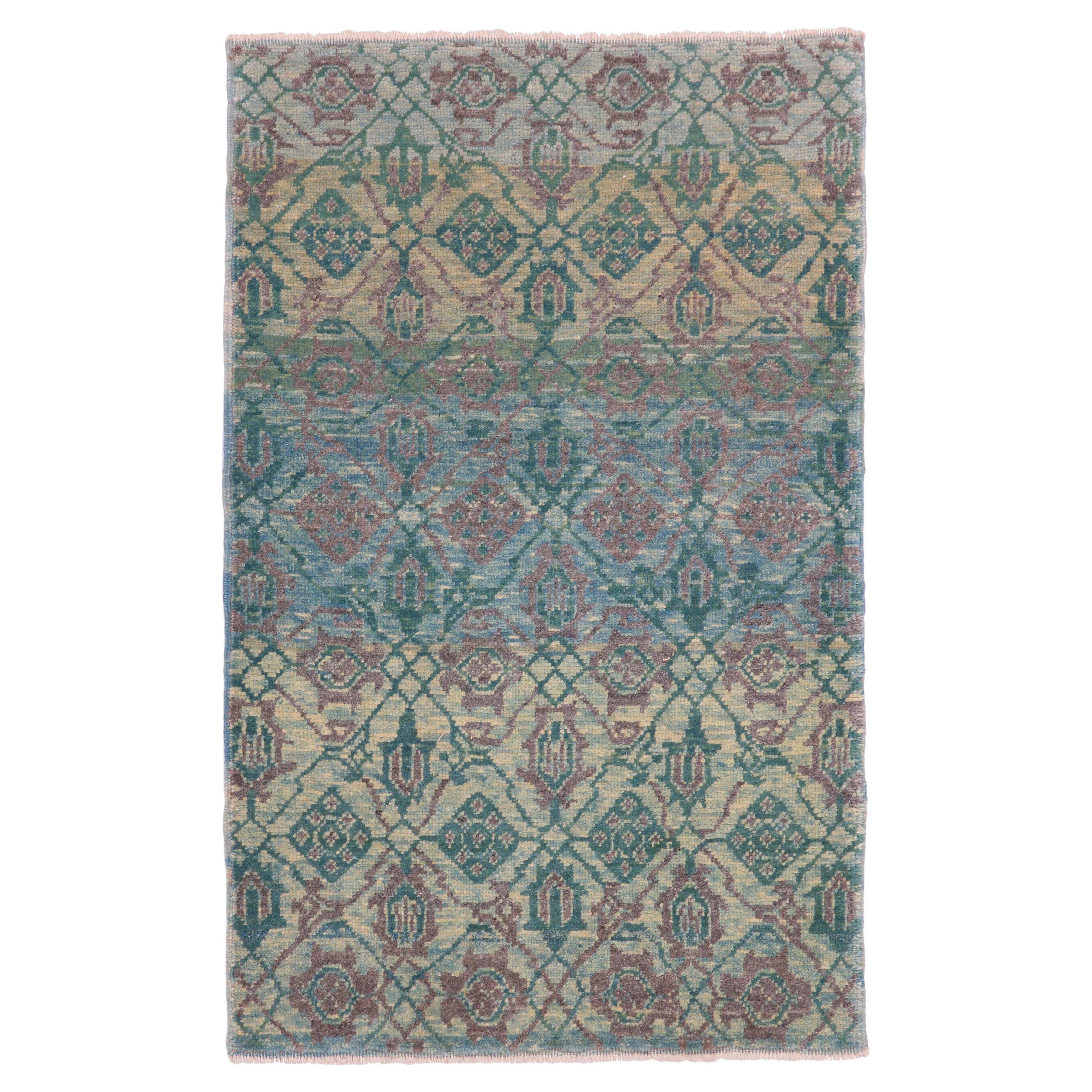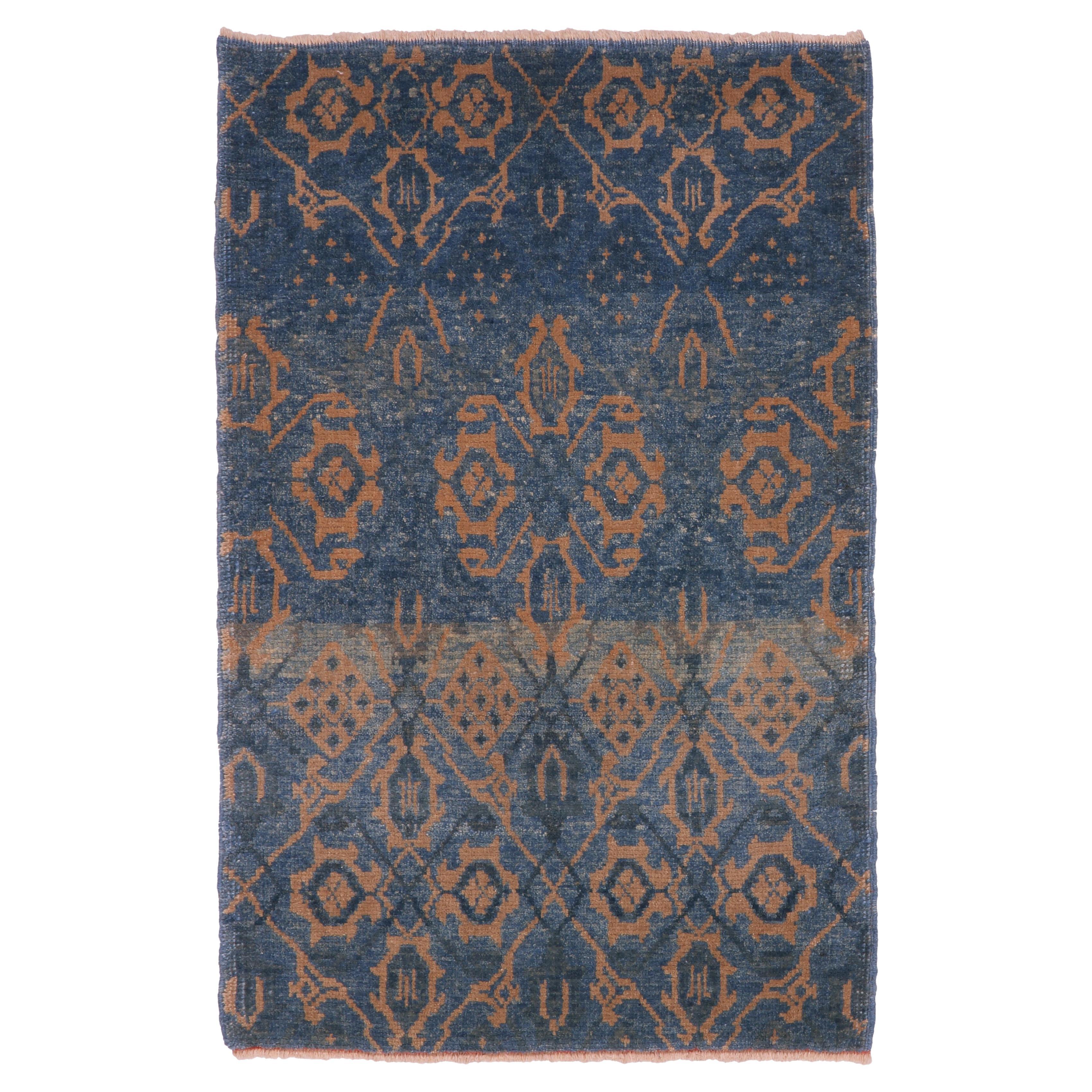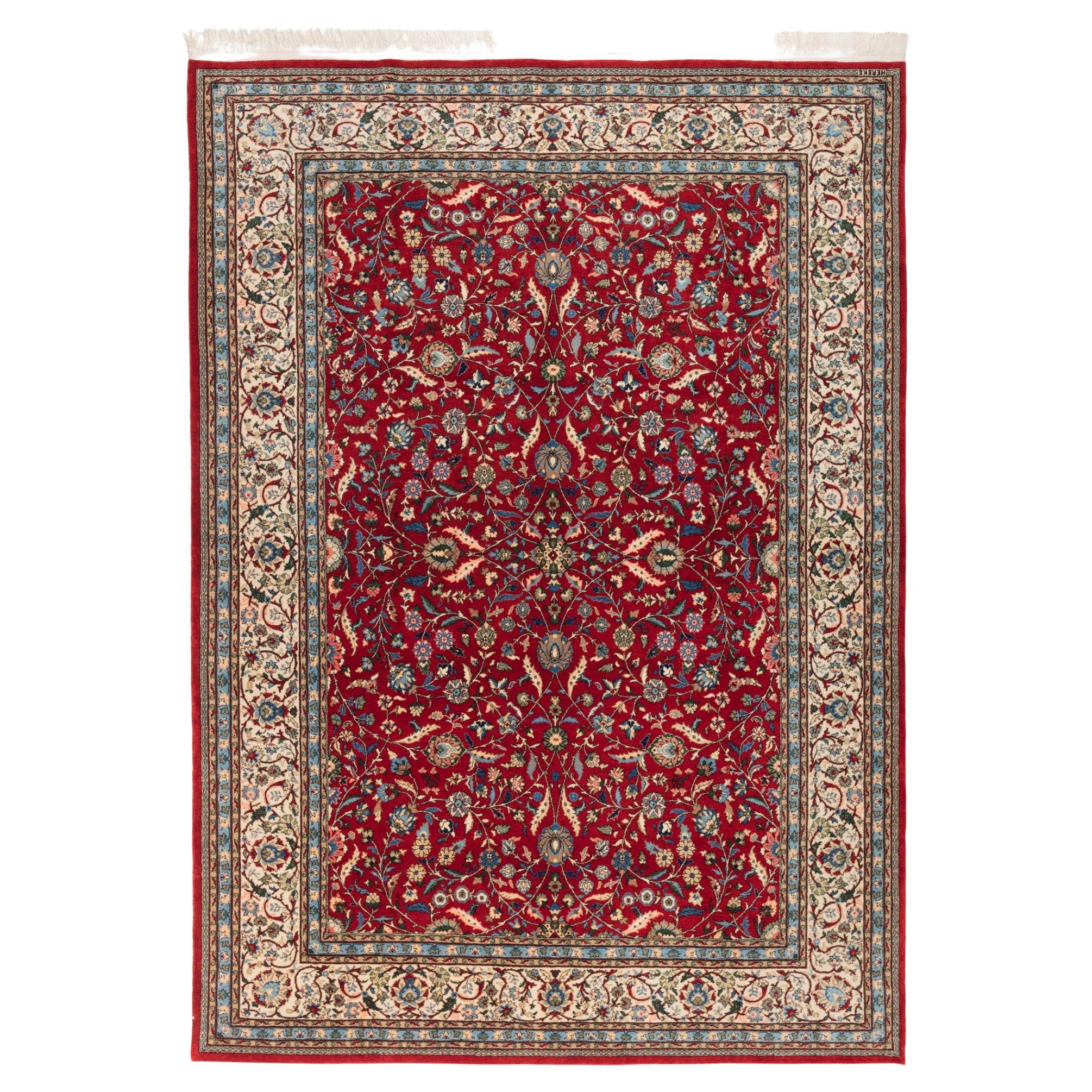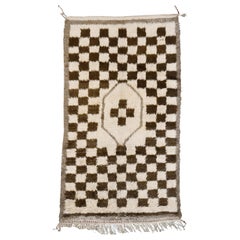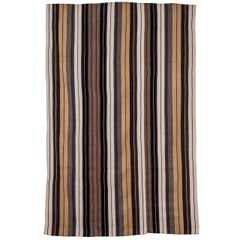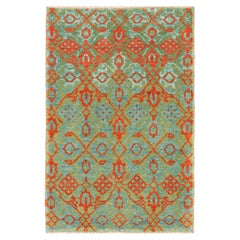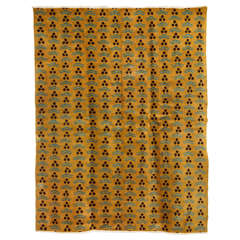
Carpet with 'Cintamani' Pattern
View Similar Items
Want more images or videos?
Request additional images or videos from the seller
1 of 6
Carpet with 'Cintamani' Pattern
About the Item
- Dimensions:Width: 79.53 in (202 cm)Length: 98.43 in (250 cm)
- Style:Oushak (In the Style Of)
- Place of Origin:
- Period:
- Date of Manufacture:circa 1910
- Condition:
- Seller Location:Milan, IT
- Reference Number:Seller: ALG 22441stDibs: 1311089549234
About the Seller
5.0
Recognized Seller
These prestigious sellers are industry leaders and represent the highest echelon for item quality and design.
Gold Seller
These expertly vetted sellers are highly rated and consistently exceed customer expectations.
Established in 1997
1stDibs seller since 2012
186 sales on 1stDibs
Typical response time: 2 hours
More From This SellerView All
- Tulu with Chequerboard PatternLocated in Milan, ITThe Tulu rugs represent one of the earliest forms of nomadic pile weaving, typically knotted with a medium-high pile as they were meant as bedding rugs for the tent. Woven in the Kar...Category
Vintage 1940s Turkish Tulu Turkish Rugs
MaterialsWool
- Vintage Anatolian Tulu Narrow Runner Rug with Polychrome StripesLocated in Milan, ITA truly spectacular runner distinguished by a plethora of colours arranged as horizontal stripes. Tulu rugs represent one of the earliest forms of nomadic pile weaving, typically kno...Category
Vintage 1970s Turkish Tulu Turkish Rugs
MaterialsWool
- Mid-Century Modern Central Anatolian Kilim Rug with StripesLocated in Milan, ITAn unusual flat-weave from the Karapinar region in central Anatolia decorated by vertical stripes in the tones of ivory, grey, camel, yellow and black.Category
Vintage 1950s Turkish Tribal Turkish Rugs
MaterialsWool
- Antique Cappadocian Zili Flat-WeaveLocated in Milan, ITWoven in a complex flat-weave technique known as Zili, this superb example originates from the area of Sivrihisar, located in Cappadocia. The background is entirely in wool and the a...Category
Antique 1880s Turkish Tribal Turkish Rugs
MaterialsWool
- Vintage Minimalist Anatolian Tulu RugLocated in Milan, ITDistinguished by a squarish format typical of yatak (bedding) rugs, this Tulu has a soft creamy yellow background randomly punctuated by small dots and by a larger one indicating the...Category
Vintage 1940s Turkish Tulu Turkish Rugs
MaterialsWool
- Large Early Ivory Minimal Tulu RugLocated in Milan, ITA rare and relatively early example of monochrome Tulu rug, distinguished by a completely open field embellished by almost calligraphic touches of natural brown wool. Tulus of this t...Category
Vintage 1920s Turkish Tulu Turkish Rugs
MaterialsWool
You May Also Like
- Ararat Rugs Mamluk Wagireh Rug with Lattice Pattern Design Egypt Revival CarpetBy Ararat RugsLocated in Tokyo, JPThis lattice pattern is composed of palmettes and leaves filling the various compartments against the imposing ground. One has the impression that it is only part of a larger scheme designed 15th-century rug from the Mamluk era, Cairo region, Eygpt. These designs have often been described as wagirehs or samplers and were said to have been used as weaver`s aids, or for demonstration purposes, made as a template or pattern for the carpet design and production of larger rugs, they are generally small pieces of the size of a scatter rug or mat. Mamluk carpets originated in a physical environment that lacked the combination of abundant marginal grazing land and a temperate climate with cool winters that were common to most carpet-weaving areas in the Islamic world. While related to a broader tradition of Turkish weaving centered in Anatolia, far to the north, the designs of these carpets include atypical elements, such as stylized papyrus plants, that are deeply rooted in Egyptian tradition. Their unusual composition and layout probably represent an attempt to develop a distinctive product that could in effect establish a “Mamluk brand” in the lucrative European export market. The uncharacteristic color scheme—devoid of the undyed white pile and employing a limited range of three or five hues in much the same value—also suggests a conscious attempt to create a particular stylistic identity. Also virtually unique in the world of Islamic carpets is the S-spun wool. It has been argued that the tradition of clockwise wool spinning originated in Egypt because of the earlier Egyptian tradition of spinning flax into linen thread. Details of the plant’s botanical structure make it impossible to spin flax fiber in the more common counterclockwise direction utilized throughout the Middle East for wool and cotton. Mamluk carpets with the color combinations seen in the Simonetti are now generally accepted as part of an earlier tradition that has many links to the weaving of Anatolia, Iran, and Syria. The “three-color” Mamluk carpets, well represented in the Metropolitan’s collection, represent a later development that continued well after the Ottoman conquest of Egypt in 1517. Many such carpets may have been produced well into the seventeenth century, and possibly even later. (Walter B. Denny in [Ekhtiar, Soucek, Canby, and Haidar 2011]). The design of the rug is interpreted by our designers from our Mamlouk-type rugs collection and soft colors are used for this rug. Color summary: 3 colors in total; Moss Green 27 (Spurge – Indigo) Mount Olive...Category
21st Century and Contemporary Turkish Revival Turkish Rugs
MaterialsWool, Natural Fiber, Organic Material
- Ararat Rugs Mamluk Wagireh Rug Lattice Pattern Revival Carpet Natural DyedBy Ararat RugsLocated in Tokyo, JPThis lattice pattern is composed of palmettes and leaves filling the various compartments against the imposing ground. One has the impression that it is only part of a larger scheme ...Category
21st Century and Contemporary Turkish Revival Turkish Rugs
MaterialsWool, Natural Fiber, Organic Material
- Vintage Turkish Anatolian CarpetLocated in New York, NYA vintage Turkish Anatolian carpet from the mid-20th century with cotton highlights.Category
Mid-20th Century Turkish Oushak Turkish Rugs
MaterialsWool, Cotton
- Ararat Rugs Mamluk Wagireh Rug Lattice Pattern Revival Carpet Natural DyedBy Ararat RugsLocated in Tokyo, JPThis lattice pattern is composed of palmettes and leaves filling the various compartments against the imposing ground. One has the impression that it is only part of a larger scheme designed 15th-century rug from the Mamluk era, Cairo region, Eygpt. These designs have often been described as wagirehs or samplers and were said to have been used as weaver`s aids, or for demonstration purposes, made as a template or pattern for the carpet design and production of larger rugs, they are generally small pieces of the size of a scatter rug or mat. Mamluk carpets originated in a physical environment that lacked the combination of abundant marginal grazing land and a temperate climate with cool winters that were common to most carpet-weaving areas in the Islamic world. While related to a broader tradition of Turkish weaving centered in Anatolia, far to the north, the designs of these carpets include atypical elements, such as stylized papyrus plants, that are deeply rooted in Egyptian tradition. Their unusual composition and layout probably represent an attempt to develop a distinctive product that could in effect establish a “Mamluk brand” in the lucrative European export market. The uncharacteristic color scheme—devoid of the undyed white pile and employing a limited range of three or five hues in much the same value—also suggests a conscious attempt to create a particular stylistic identity. Also virtually unique in the world of Islamic carpets is the S-spun wool. It has been argued that the tradition of clockwise wool spinning originated in Egypt because of the earlier Egyptian tradition of spinning flax into linen thread. Details of the plant’s botanical structure make it impossible to spin flax fiber in the more common counterclockwise direction utilized throughout the Middle East for wool and cotton. Mamluk carpets with the color combinations seen in the Simonetti are now generally accepted as part of an earlier tradition that has many links to the weaving of Anatolia, Iran, and Syria. The “three-color” Mamluk carpets, well represented in the Metropolitan’s collection, represent a later development that continued well after the Ottoman conquest of Egypt in 1517. Many such carpets may have been produced well into the seventeenth century, and possibly even later. (Walter B. Denny in [Ekhtiar, Soucek, Canby, and Haidar 2011]). The design of the rug is interpreted by our designers from our Mamlouk-type rugs collection and soft colors are used for this rug. Color summary: 3 colors in total; Moss Green 27 (Spurge – Indigo) Mount...Category
21st Century and Contemporary Turkish Revival Turkish Rugs
MaterialsWool, Natural Fiber, Organic Material
- Ararat Rugs Mamluk Wagireh Rug Lattice Pattern Revival Carpet Natural DyedBy Ararat RugsLocated in Tokyo, JPThis lattice pattern is composed of palmettes and leaves filling the various compartments against the imposing ground. One has the impression that it is only part of a larger scheme ...Category
21st Century and Contemporary Turkish Revival Turkish Rugs
MaterialsWool, Natural Fiber, Organic Material
- Ararat Rugs Mamluk Wagireh Rug Lattice Pattern Revival Carpet Natural DyedBy Ararat RugsLocated in Tokyo, JPThis lattice pattern is composed of palmettes and leaves filling the various compartments against the imposing ground. One has the impression that it is only part of a larger scheme ...Category
21st Century and Contemporary Turkish Revival Turkish Rugs
MaterialsWool, Natural Fiber, Organic Material
Recently Viewed
View AllMore Ways To Browse
Wall Decoration Midcentury Modern
Leather Frame Chair
Table Top Frame
Small Plate
Vintage Chair Table
Vintage Wall Decoration
Carved Hall Tables
Silver Rare
Teak Chair
Vintage Design Chairs
Only Vintage
Vintage Chrome Chairs Furniture
Vintage Chrome Chair Furniture
Vintage Chrome Chairs
Antique Living Room Sets
Antique Living Room Set
Antique Living Room Furniture Sets
Vintage Glass
